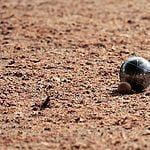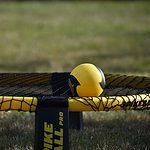As you step onto the pickleball court, you may find yourself wondering about the five essential rules governing this dynamic game.
From the critical no-volleying in the kitchen to the strategic one bounce per side regulation, each rule plays a crucial role in shaping your gameplay.
But have you ever considered the finer details of serving at the baseline or the significance of serves avoiding the non-volley zone?
Understanding these rules can be the key to unlocking your full potential in a pickleball match, guiding you towards a path of competitive yet enjoyable play.
Key Takeaways
- Kitchen rules restrict volleys near the net.
- Bouncing rule mandates a bounce on each side.
- Serve regulations include positioning and motion.
- Game ending rules require a 2-point lead.
No Volleying in the Kitchen
When playing pickleball, remember this fundamental rule: no volleying in the kitchen. The kitchen, a 7-foot area on both sides of the net, is a crucial part of the game that restricts players from hitting volleys while standing within it. Violating this rule by stepping into the kitchen during a volley results in a fault in pickleball gameplay. This rule ensures fair play by preventing players from gaining an advantage by volleying close to the net.
In pickleball, the kitchen rule is designed to maintain an even playing field and prevent players from exploiting their proximity to the net. By disallowing volleys in this area, the game promotes strategic shot placement and skillful gameplay rather than relying solely on proximity to the net for an advantage. Understanding and adhering to the kitchen rule is essential for players to compete within the boundaries of the sport's regulations effectively. Remember, stay out of the kitchen to keep the game fair and enjoyable for all players.
One Bounce per Side
Stepping onto the pickleball court, you must abide by the One Bounce Rule, ensuring the ball bounces once on each side of the net during a rally. Letting the ball bounce before returning it not only promotes fair play but also leads to longer rallies, adding an element of strategy and skill to the game. By allowing the ball to bounce, both teams are granted an opportunity to make a play, making the game more engaging and dynamic. Violating the One Bounce Rule results in a fault and the loss of the point, emphasizing the importance of adhering to this rule. This rule not only enforces fairness but also encourages players to develop their ability to anticipate the ball's trajectory and plan their shots accordingly.
| One Bounce Rule | Benefits |
|---|---|
| Promotes fair play | Longer rallies |
| Enhances strategy and skill | Provides equal opportunity |
| Prevents faults and point loss | Develops anticipation skills |
Serve at the Baseline
To serve in pickleball correctly, position yourself at the baseline with one foot behind it before executing your underhand serve. The serve must be struck below the waistline and in an underhand motion. As you prepare to serve, ensure your foot remains behind the baseline to avoid a fault.
Your serve should be diagonal, crossing over the net and landing in the opponents' service court. Remember, serving into the non-volley zone results in a fault and a loss of serve. By serving from the baseline, you give yourself the best chance to start the point off on the right foot. This position allows you to maintain control over the serve's direction and power.
Keep practicing your serves to ensure consistency and accuracy while following the rules to avoid any faults during the game. Serving from the baseline sets the tone for the point and can give you a strategic advantage right from the start.
Serves Cannot Land in Non-Volley Zone
After serving at the baseline in pickleball, it's crucial to ensure that your serves don't land in the non-volley zone to avoid faults. The non-volley zone, also known as 'the kitchen,' is a 7-foot area on both sides of the net where volleying the ball isn't allowed.
If your serve lands in this restricted area, it's considered out of bounds, resulting in a fault. To avoid faults, make sure your serves clear the non-volley zone entirely. Stepping into the kitchen during your serve is also a fault in pickleball, so be mindful of your positioning.
Game Ends at 11, 15, or 21 Points
Pickleball games can conclude when a player reaches 11, 15, or 21 points, with the requirement of leading by at least two points for a victory. The point target can vary based on player preference or tournament regulations. A win by 2 rule ensures a clear victory margin in games ending at 15 or 21 points. Players must strategize and maintain a consistent performance to secure the necessary point advantage. The game's competitive nature is maintained by the point target variations and win by 2 rule.
In pickleball, the flexibility of point targets allows for different game lengths, catering to players' preferences and tournament standards. The win by 2 rule adds an extra layer of excitement and challenge, preventing close games from ending prematurely. With the need to strategize effectively and deliver top-notch performances, players are constantly pushed to excel and outmaneuver their opponents in this dynamic and engaging sport.





